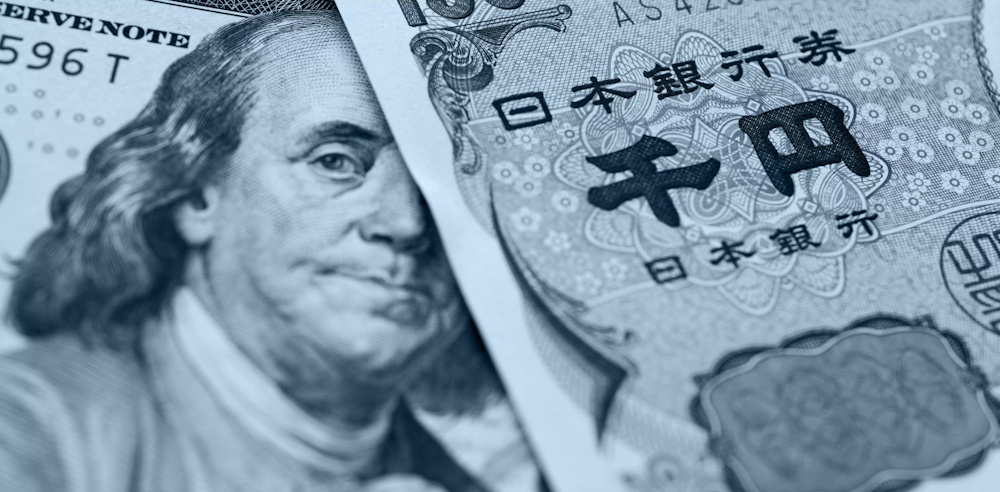The USD/JPY pair is currently trading at approximately ¥154.10, consolidating close to its nine-month peak after reaching ¥154.49, as global traders assess the optimism surrounding Washington’s fiscal relief in contrast to Tokyo’s tightening stance. The U.S. Senate’s decision to reopen the government has sparked increased demand for the dollar and enhanced risk appetite, while Japan’s ongoing threats of intervention have limited the pair’s rise near ¥154.80 — a significant resistance level that the Ministry of Finance has consistently defended through verbal statements for weeks. Volatility continues to be high as investors prepare for possible policy changes on both sides of the Pacific, with intervention warnings now serving as the market’s psychological barrier. Reports indicates a 67.9% likelihood of a Federal Reserve rate cut in December, prompted by soft labor data that disclosed approximately 11,000 U.S. job losses per week in October. The recent dovish shift in Federal Reserve expectations has constrained the momentum of the dollar, despite an improvement in risk sentiment. The internal minutes from the Bank of Japan reveal a persistent divide among policymakers regarding the sustainability of inflation progress and its implications for further tightening measures. Prime Minister Sanae Takaichi’s dedication to sustaining ultra-loose monetary conditions strengthens yield differentials, which continue to exert pressure on the yen. The ongoing tug-of-war between expectations for Fed easing and the Bank of Japan’s policy inaction is shaping the trajectory of the pair, causing traders to fluctuate between bullish surges and concerns over potential intervention around ¥155.00.
Japan’s latest Reuters Tankan Index has shown an unexpected increase, rising to 17 in November from 8 in October, marking its highest level since early 2022. Manufacturers and service firms indicated strong business conditions, driven by a resurgence in the automotive and electronics sectors. The auto and transport machinery index experienced a significant increase from 9 to 27, while the electronics sector rose from 5 to 25, indicating robust export performance bolstered by a weaker yen. The survey reveals a positive trend in confidence among private enterprises, indicating that Japan’s corporate sector is effectively responding to cost pressures while sustaining profitability, even in the face of weaker domestic consumption. The U.S. Senate’s endorsement of a funding package to reopen the government has instilled a sense of optimism in global markets, contributing to the USD/JPY pair maintaining support levels above ¥154.00. The anticipation surrounding the House of Representatives’ passage of the measure is driving demand for the dollar, despite ongoing political uncertainty. In the event of delays, the pair may face a retracement towards ¥153.00, whereas full approval could initiate another examination of ¥155.00. The shutdown resolution has bolstered expectations for fiscal stability, enhancing confidence in U.S. Treasuries as the 10-year yield holds steady around 4.60%, preserving significant spreads over Japan’s sub-1% bond rates.
In the context of the prevailing uptrend, daily candlestick charts reveal a notable hesitation beneath ¥155.00, as evidenced by the recurring doji formations that suggest market fatigue. A bearish RSI divergence on the daily timeframe indicates a weakening momentum, despite prices remaining stable. Risk-reversal data indicates that 1- and 3-month 25-delta options are experiencing a downward trend, signifying an increased demand for downside protection in USD/JPY. Key resistance is positioned between ¥154.80 and ¥155.00, whereas initial support is found around ¥153.00. A decisive move below that threshold could hasten a return to the mean around ¥151.80, while fresh buying from lower levels might pave the way for a revisit of February’s peak at ¥155.88. Officials at Japan’s Ministry of Finance have reaffirmed their preparedness to “act decisively” should speculative yen selling persist. Intervention discussions escalated as the pair remained around ¥154.50, a threshold traditionally linked to previous currency support measures. Market participants remember that the previous direct intervention in 2022 took place at comparable price levels, leading to a significant 4% intraday reversal. Current positioning in futures markets indicates an uptick in hedging activity, as traders are amplifying their exposure to short-term yen calls in expectation of possible government intervention. Market participants are exercising caution, recognizing that an unexpected intervention could lead to a rapid decline in USD/JPY, potentially approaching ¥150.00 in a matter of hours.
With ongoing policy uncertainty, the positioning of investors has become varied. Leveraged funds hold a net long position in USD/JPY, indicating a belief in persistent yield differentials, whereas asset managers have slowly increased their yen long positions, expecting a future normalization from the BoJ. Anticipated addresses from FOMC members Barr and Waller, in conjunction with BoJ Governor Ueda’s statements, are projected to influence market volatility as the week concludes. Any suggestion from Ueda regarding policy recalibration could lead to a sudden increase in yen strength; however, if the rhetoric remains consistent, the dollar’s dominance may persist into December. The USD/JPY market is currently positioned at a pivotal juncture. The dollar’s near-term stability is underpinned by fundamentals, with U.S. yields remaining high while Japanese authorities show reluctance to raise rates. However, the presence of bearish divergences, an abundance of long positions, and credible threats of intervention constrain the potential for further gains. With support at ¥153.00 and resistance at ¥155.00, market participants encounter a constrained environment where momentum may shift dramatically. Considering the data, yield spreads, and intervention risk, the current position is to Hold — pending clear confirmation from either the BoJ or the Fed before a significant directional breakout occurs.

